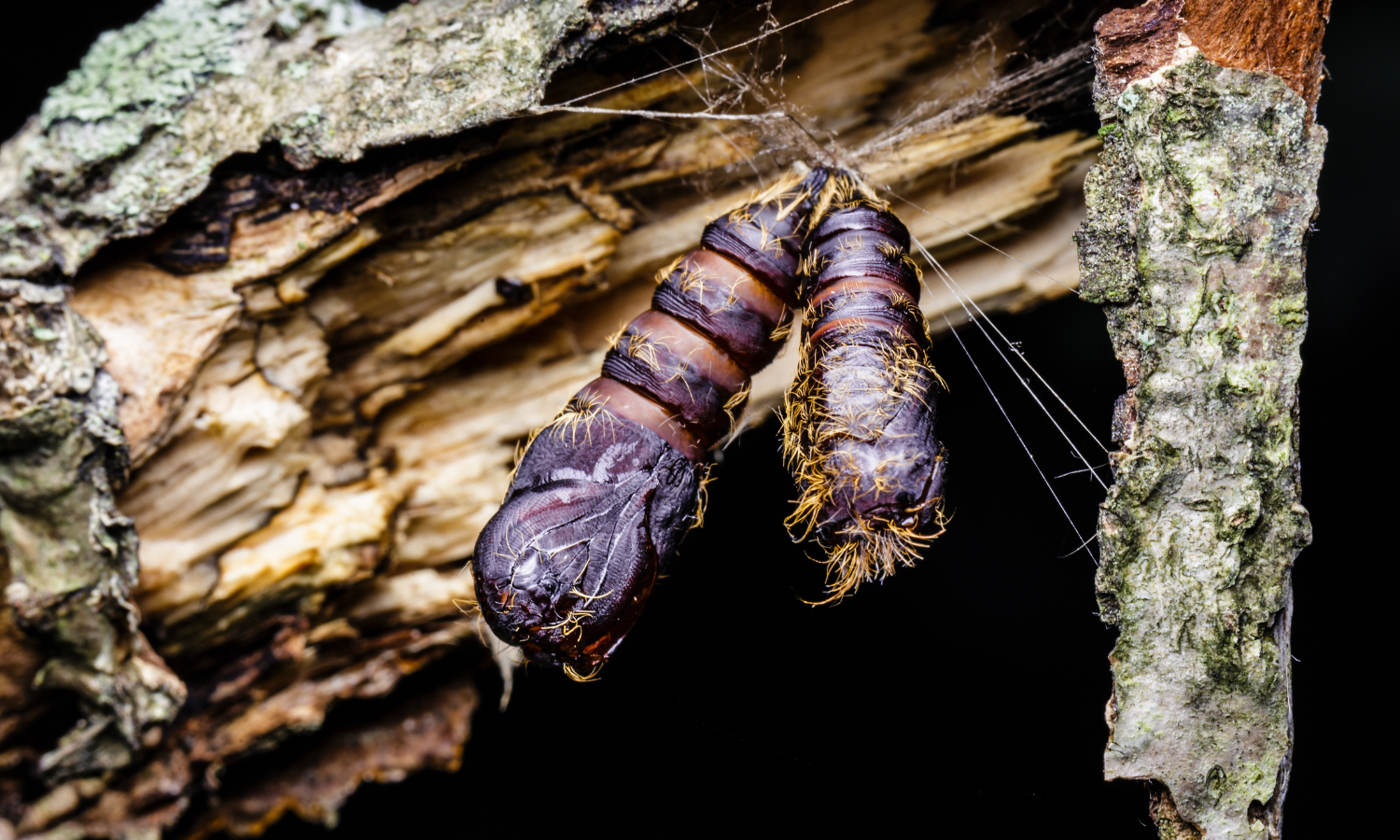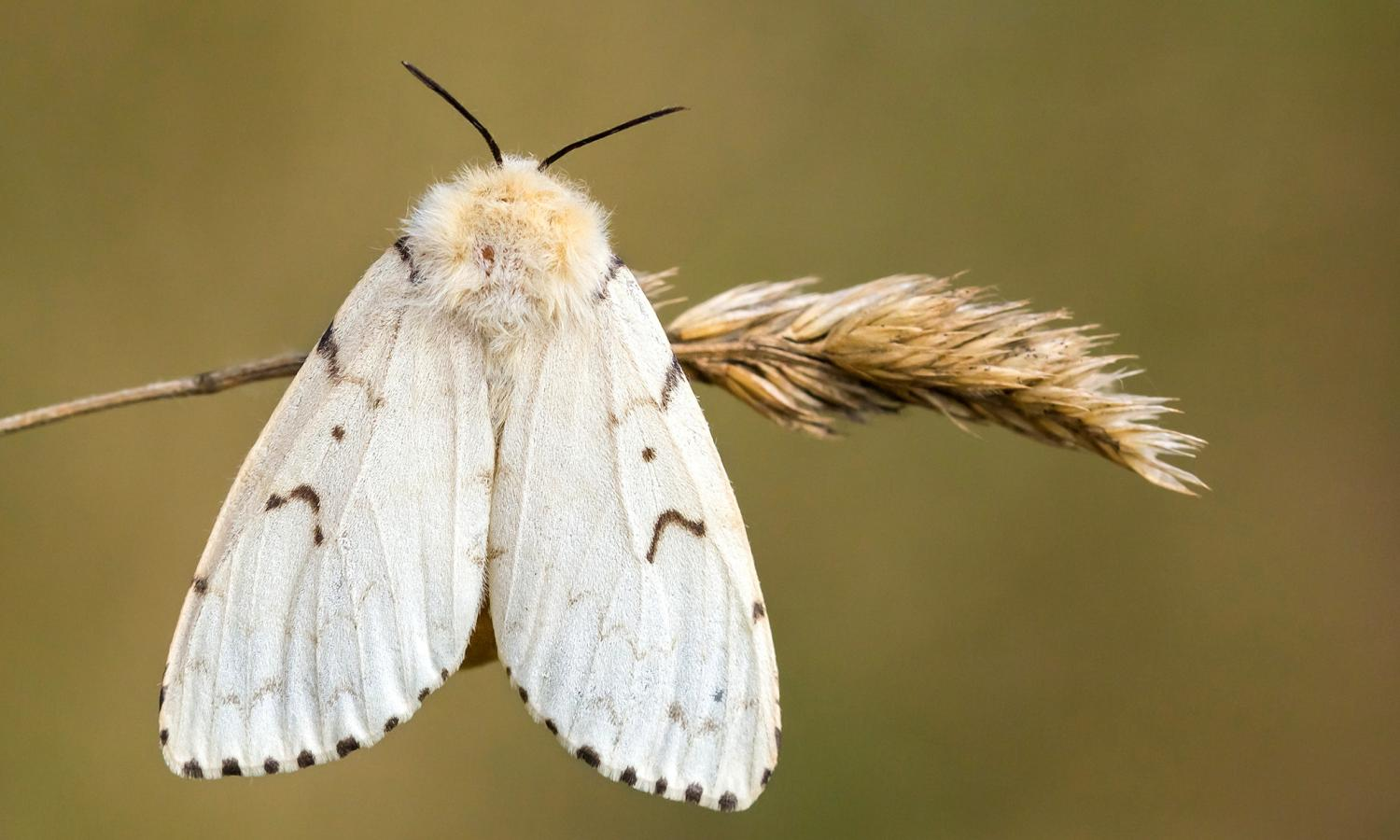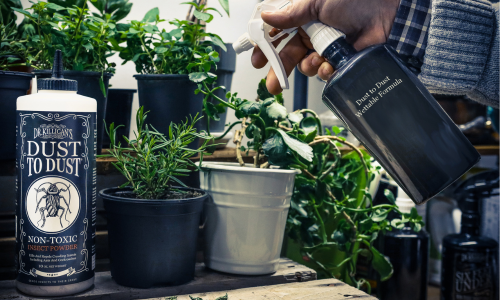Gypsy moths, now known as spongy moths (Lymantria dispar), are notorious for their voracious appetite for trees and shrubs and pose a significant threat to forests and landscapes. This article delves into nature's arsenal, offering eco-friendly solutions to combat these pests, with a special focus on innovative methods to manage gypsy moth eggs and caterpillars without harming the ecosystem.
A historical overview of the gypsy moth in the U.S.
The tale of the gypsy moth in the United States is a classic story of unintended consequences. In the mid-nineteenth century, the gypsy moth was imported to develop a silk-producing moth that could rival the silkworm moth but without its disease susceptibility. This experiment, spearheaded by amateur lepidopterist Leopold Trouvelot in Medford, Massachusetts, could have been better. Despite cultivating over a million larvae, in 1868 or 1869, several adult gypsy moths escaped. It took a decade for the local trees to show the devastating impact, marking the beginning of what would become one of the most destructive forest pests in the U.S.
From its accidental introduction, the gypsy moth has defoliated millions of acres across the northeastern United States, continuing to spread into Virginia, North Carolina and Michigan — where there was a population surge in 2023 — and even reaching isolated pockets in the Pacific Coast states. This rapid expansion underscores the critical need for effective pest management strategies that can address the current infestation while preventing further spread.
The remarkable dispersal methods of gypsy moths
Understanding the gypsy moth's unique distribution methods is key to grasping the scale of their infestation and the challenge of containing their spread. Gypsy moths have evolved specialized dispersal techniques that allow them to colonize new areas rapidly and efficiently. The young larvae, for instance, are equipped with hairs containing small air pockets, providing them with buoyancy. This adaptation enables them to be carried by the wind, traveling great distances—sometimes as high as 2,000 feet in the air and covering up to five miles in a day.

Equally problematic is the behavior of adult females, who often lay their egg masses on motor vehicles, including trucks and recreational vehicles parked near infested areas. This method of hitchhiking on human transportation extends the reach of gypsy moths well beyond natural wind dispersal, allowing them to establish in new regions far from their original habitats. These ingenious, albeit troublesome, dispersal methods underscore the importance of vigilance and proactive measures in controlling gypsy moth populations.
As gypsy moths spread across the U.S., grasping their distribution underscores the need for diverse and innovative pest control strategies. The following sections will explore eco-friendly strategies targeting gypsy moth eggs and caterpillars, emphasizing methods that safeguard our ecosystems while combating this pervasive pest.
Understanding the spongy moth's life cycle
The spongy moth undergoes a fascinating life cycle characterized by distinct stages.
Early stages and identification challenges:
After hatching from egg masses in late April to early May, the caterpillars are minuscule, barely a few millimeters long, rendering them nearly invisible against the vast backdrop of forest foliage. At this initial stage, their dark coloration helps them blend seamlessly with the bark and leaves, aiding in their survival from predators.
Feeding habits and growth:
As they begin feeding, spongy moth caterpillars show a marked preference for the leaves of birch, beech, oak, maples and other hardwood trees. This voracious appetite leads to significant defoliation, impacting not just individual trees but entire forest ecosystems. With each successive molt, the caterpillars grow larger, shedding their exoskeletons to accommodate their increasing size. By mid-June, they are large enough to be noticed, characterized by their striking pattern of blue and red warts and a distinctive set of bristle tufts that adorn their bodies.
Behavioral shifts:

Interestingly, the caterpillars undergo a behavioral shift as they mature. Initially, they feed during the daylight hours but transition to nocturnal feeding patterns as they grow. This change likely serves as a strategy to avoid daytime predators and increase their chances of survival.
Transition to adulthood:
The transition from caterpillar to adult moth begins with the pupal stage, where they encase themselves in a cocoon, often in the crevices of tree bark or among leaf litter. Within these protective casings, the caterpillars undergo a remarkable transformation, emerging as fully formed moths ready to reproduce.
The adult phase:
Adult spongy moths exhibit sexual dimorphism, with males possessing the ability to fly in search of mates, while females, larger and predominantly white, remain grounded but release potent pheromones to attract partners. Despite their brief adult lifespan, the focus of this phase is reproduction, with females laying egg masses containing up to a thousand eggs in a variety of locations, from tree trunks to man-made structures, ensuring the continuation of their lineage.
A cycle of renewal and challenge:
Each egg mass overwinters, lying in wait to hatch the following spring and begin the cycle anew. This relentless cycle poses significant challenges for forest management and necessitates targeted strategies for controlling their spread without harming the ecosystem.
Eco-friendly strategies for managing spongy moths: A historical perspective
The battle against the spongy moth has seen a significant evolution in control strategies over the years. Initially, simple mechanical methods such as scraping egg masses from trees and destroying them, or employing sticky bands around trunks to halt the upward march of hungry caterpillars, were common practices. These methods, while somewhat effective, required considerable effort and were only part of the solution.

The post-World War II era saw the introduction of chemical control measures, notably DDT, which proved highly effective in reducing spongy moth populations. However, the environmental toll of such broad-spectrum pesticides, including the harm to non-target species like honeybees and bald eagles, led to a reevaluation of pest management practices. The realization that these chemicals could decimate beneficial insects and disrupt ecosystems prompted a shift towards more sustainable solutions.
In pursuit of eco-friendlier alternatives, nearly 50 species of parasitic insects have been introduced as biological controls. These natural enemies of the spongy moth play a crucial role in curbing its population by preying on the caterpillars and eggs. This strategy has significantly mitigated the impact of spongy moths without the collateral damage associated with chemical pesticides.
Today, fostering habitats for natural predators, coupled with vigilant monitoring and the judicious use of biological agents, represents the pinnacle of eco-friendly spongy moth management. These strategies not only aim to control the pest but also preserve biodiversity and maintain the health of forest ecosystems. The journey from reliance on chemical pesticides to the adoption of integrated, environmentally conscious pest management reflects a growing understanding of the importance of balancing pest control with ecological stewardship.
Innovative solutions: Dust to Dust against spongy moths
In the eco-conscious battle against the spongy moth invasion, Dr. Killigan's Dust to Dust Plant-Based Insect Powder represents a significant advance in pest control strategies. This silica-based powder transcends traditional pest control methods by offering a non-toxic, human and pet-safe solution while delivering a potent blow to spongy moth caterpillars on contact. Let's dive deeper into the strategic application and essential considerations for deploying this innovative product to protect our green spaces.
Optimal timing and application techniques for Dust to Dust
Understanding the spongy moth life cycle for timely application:
The lifecycle of the spongy moth is pivotal in planning the application of Dust to Dust. As mentioned above, hatch occurs in late April to early May in most climates, which marks the optimal window for Dust to Dust application. Targeting the early larval stage, when caterpillars are tiny (about 1/8 inch or 3 mm long) and most vulnerable, ensures maximum effectiveness. This period is critical as the caterpillars are smaller, ensuring higher contact rates with Dust to Dust. As caterpillars grow up to 2.5 inches (65 mm), their susceptibility to the product decreases due to lesser ground contact and increased foliage consumption.

Identification and control measures:
- Egg masses: Look for egg masses on trees, shrubs and outdoor surfaces during late winter to early spring. These are tan or buff-colored and roughly the size of a quarter.
- Young caterpillars: Shortly after hatching, caterpillars can be found on the undersides of leaves or ascending trunks. This stage is crucial for Dust to Dust application.
- Feeding damage: Noticeable damage includes chewed leaves on susceptible trees like oak, maple and birch. Significant defoliation indicates heavy infestation.
Application strategies
Direct application:
For bushes and shrubs, utilize the Insect Buster Bulb Duster for an even distribution of Dust to Dust, ensuring comprehensive leaf coverage. This method specifically targets caterpillars by creating a physical barrier they must navigate, which helps in reducing their presence and preventing damage effectively.
Wet spray for tree trunks:
A wettable solution of Dust to Dust, meticulously prepared and applied, serves as an ideal defense for tree trunks, especially during the critical spring surge (late April to early May). This period is crucial for preventing caterpillars from climbing and accessing the foliage, thus deterring re-infestation.
Preparing the solution:
To create this solution, mix 2 oz of Dust to Dust with water to achieve a consistency akin to wettable dust. It's imperative to shake this mixture frequently during the application process to ensure the active ingredients remain well-distributed. This consistency and the process ensure the solution's effectiveness is maintained from start to finish.
Choosing the right sprayer for application:
The efficacy of the Dust to Dust wettable solution significantly depends on the type of sprayer used. A standard-sized trigger sprayer, similar to our Six Feet Under trigger sprayer, is recommended for its effectiveness. Mini trigger sprayers and pump sprayers should be avoided as they produce a fine mist, which is less effective for this application. High-output sprayers capable of being set to a stream setting are preferable. This setting facilitates the silica and other crucial ingredients to be dispensed more efficiently and ensures a more effective coverage on tree trunks. The stream setting is particularly advantageous over misting because it aids in better adhesion of the solution to the surface, thereby creating a more durable barrier against pests.
Optimizing pest control with Dust to Dust
Advanced mechanisms of action:

Dust to Dust employs a dual-action mechanism: the physical abrasiveness of silica particles and the neuro-disruptive effects of encapsulated essential oils. This combination disrupts the caterpillars' central nervous system alongside causing physical damage, ensuring a comprehensive defense against infestations.
Maintenance and reapplication:
Given the possibility of heavy rainfall washing away the product, vigilant monitoring and timely reapplication are essential. The visibility of Dust to Dust aids in identifying areas that need retreatment. Regular monitoring and strategic application after rain or in high-activity zones are crucial for maintaining effectiveness.
Integrated Pest Management (IPM):
Combining Dust to Dust with other IPM strategies, such as manual removal of egg masses and using burlap bands for trapping, enhances overall control efforts. This multi-faceted approach ensures the health of your landscape while minimizing environmental impact.
Implementing eco-friendly pest control
Effective pest management against gypsy moths requires a multifaceted approach. Encouraging natural predators and applying Dust to Dust during the caterpillar stage can collectively mitigate the gypsy moth threat. These strategies, underscored by the importance of hydration for affected trees, provide a holistic approach to managing outbreaks and supporting ecosystem recovery.
Conclusion
The fight against spongy moths, equipped with nature's ingenious strategies and groundbreaking solutions like Dust to Dust Plant-Based Insect Powder, highlights our dedication to eco-friendly pest control. Understanding the life cycle of the spongy moth, recognizing infestation signs and employing sustainable management tactics are crucial steps in safeguarding our forests and landscapes from this relentless invader. As we persist in discovering and applying environmentally conscious methods, we not only protect but also nurture the vitality of our natural world for the generations to come. Let this be a call to action for all of us: to remain vigilant and proactive in our pest management efforts, constantly adapting and learning, to ensure a healthy, resilient ecosystem. The journey of ecological stewardship is ongoing, and together, we can make a significant impact.





















